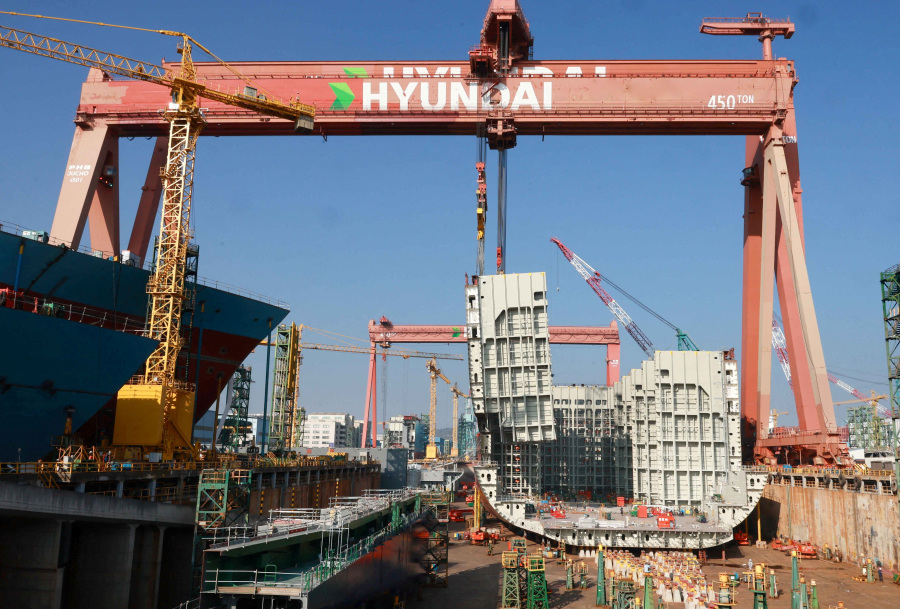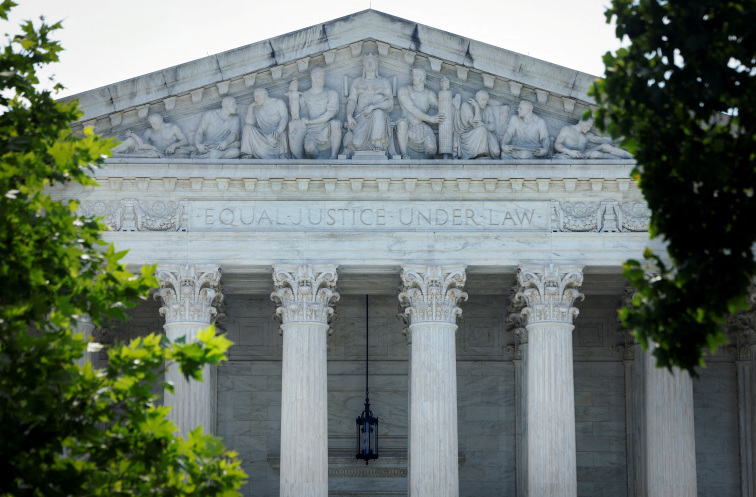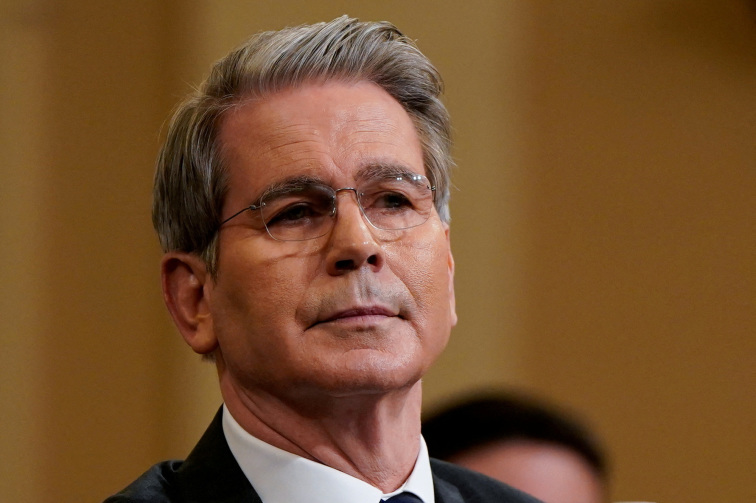PHILADELPHIA/SEOUL (Reuters) -South Korean President Lee Jae Myung leaned on promises to "Make American Shipbuilding Great Again" during his first official U.S. trip, as the two allies wrangle over other details of their trade and security agreements.
On Tuesday, Lee visited a shipyard owned by South Korea's Hanwha Group to highlight investment plans, a day after he met with U.S. President Donald Trump for their summit.
Under a South Korean pledge to inject $350 billion into U.S. projects, shipbuilding has emerged as one of the most concrete areas of investment, with $150 billion earmarked for the sector.
"The project I proposed to President Trump to Make American Shipbuilding Great Again is not just a vision to build huge warships and state-of-the-art ships," Lee said in a speech at the shipyard. "It is a grand vision to restore a dream that has disappeared."
Trump says he wants to revitalise shipbuilding to keep up with China, the world's biggest shipbuilder and operator of the world's largest maritime fighting force.
The potential - and pitfalls - of that project were on display during Lee's visit to the shipyard, one of the largest in the United States.
Hanwha, which acquired the facility last year, plans to spend $5 billion and install two additional docks and three quays to take its output from less than two vessels a year to up to 20, it said on Tuesday.
Pennsylvania's Democratic Governor Josh Shapiro told reporters after the shipyard tour that the Republican president's tariff policies were making it harder for South Korean companies and raising prices for American consumers.
"Understand, we didn't have to have this tariff fight. Donald Trump pushed that button, put the tariffs in place. He drove up consumer costs," Shapiro said, adding "We want to grow our economy and attract more investment from Korea across all industries."
Monday's U.S.-South Korea summit did little to settle ongoing details of the two countries' tariff deal, but Lee agreed to increase South Korea's own defence expenditures and play a bigger role in responding to the changing political situation in the region, his office said, without elaborating.
South Korea's industry ministry said 11 non-binding agreements were signed between U.S. and South Korean companies during Lee's visit, in shipbuilding, nuclear energy, aerospace, gas and critical minerals.
In shipbuilding, HD Hyundai agreed with state-run Korea Development Bank and Cerberus Capital to create a multibillion-dollar joint investment fund aimed at strengthening the maritime capabilities of the U.S. and its allies, including shipbuilding, marine logistics infrastructure, and advanced marine technology.
Samsung Heavy Industries agreed with Vigor Marine Group to partner in fields such as maintenance and repair of U.S. Navy vessels, shipyard modernisation and joint ship construction.
A top South Korean official said on Monday the two countries had decided to establish a non-binding agreement to define the operation and structure of $350 billion in investment funds agreed as part of their July tariff deal.
LEGAL, MANUFACTURING HURDLES
During tariff talks in July, South Korea offered a package dubbed "Make American Shipbuilding Great Again" partly to help modernise U.S. shipyards, which officials in Seoul touted as instrumental in reaching their unwritten trade deal.
U.S. shipyards, which had the world's highest production capacity during World War II, saw their market share fall to 0.04% by 2024. China and South Korea are responsible for 83% of global commercial shipbuilding, according to UN Trade and Development data.
"We're going to go back into the shipbuilding business again," Trump said during his Oval Office meeting with Lee.
Experts, industry sources and South Korean officials say there will be a lot of work required to get there.
"I think the U.S. shipbuilding industry hasn't had to compete very much. Facilities are old, and there's a shortage of technicians," Steve SK Jeong, head of the Naval Ship Global Business at Hanwha Ocean, previously told Reuters.
Training local workers could take four to five years, and it is hard to find people willing to do difficult shipyard work, South Korean industry sources told Reuters.
Jeong said Hanwha is working to modernise facilities, train and equip workers, and transplant its manufacturing process that can build ships much faster.
Issues obtaining parts like steel plates may also hinder rapid progress.
Trump said on Monday some U.S. ships would still be built in South Korea for now.
"We're going to be buying ships from South Korea," he said. "But we're also going to have them make ships here with our people."
South Korean officials said that unless some U.S. protectionist policies are eased, construction of full ships or modules to be delivered to U.S. shipyards may be limited.
The 1920 Jones Act requires goods moved between U.S. ports to be carried by ships built domestically.
Similarly, the Byrnes-Tollefson Amendment prohibits the construction of U.S. Navy vessels in foreign shipyards, although the president retains the authority to waive its provisions for national security. Some U.S. lawmakers have proposed changes that would open the door for U.S. allies to participate more.
(Reporting by David Shepardson in Philadelphia and Joyce Lee in Seoul; Additional reporting by Heejin Kim and Ju-min Park; Writing by Josh Smith; Editing by Lincoln Feast)











News magazine bootstrap themes!
I like this themes, fast loading and look profesional
Thank you Carlos!
You're welcome!
Please support me with give positive rating!
Yes Sure!